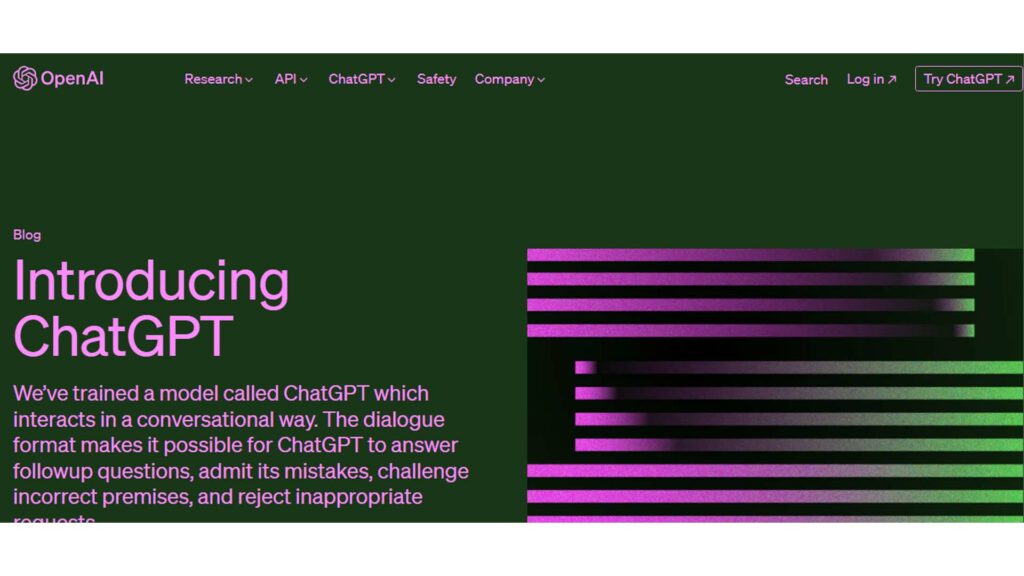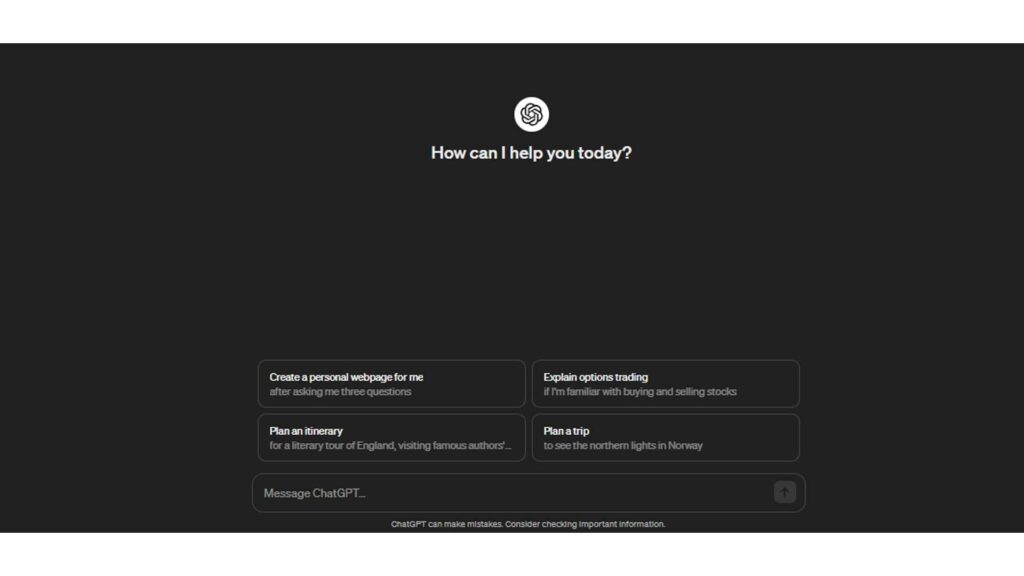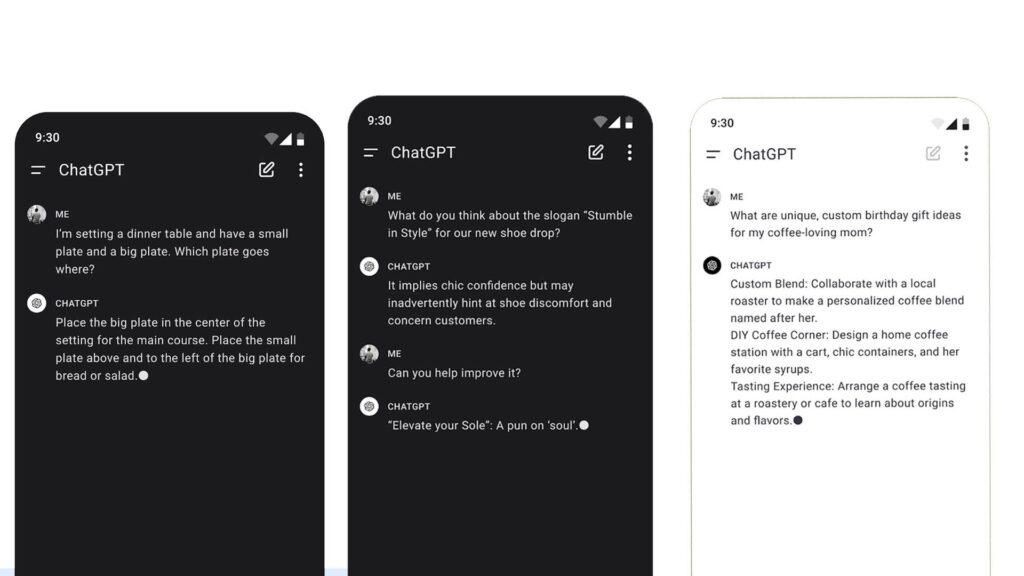ChatGPT from OpenAI is at the forefront of the generative AI revolution, garnering a large user base and promising to reshape how we create and operate. Its impact parallels that of significant technological advancements like the iPhone.
Developed by OpenAI, ChatGPT, based on a Large Language Model (LLM), continues to expand both in its capabilities and intelligence. This article aims to provide a comprehensive overview of ChatGPT, covering its functionalities and whether opting for the premium version is worthwhile.
If you’re curious about ChatGPT’s capabilities and how it can benefit you, you’ve come to the right place. Additionally, for those new to the technology, our beginner’s guide to ChatGPT offers insights into maximizing its potential.
ChatGPT’s emergence has sparked an AI competition, with Microsoft creating Copilot using akin technology, Google unveiling its Google Gemini apps, social media platforms introducing their AI chatbots, and X (formerly Twitter) joining the fray.
Introducing ChatGPT
ChatGPT stands as an AI chatbot, initially constructed using a group of Large Language Models (LLMs), notably GPT-3. OpenAI has now rolled out its latest iteration, the GPT-4 models, capable of comprehending and generating human-like responses to text prompts due to extensive data training.
Data Training and Capabilities
For instance, the original ChatGPT, the GPT-3.5 model, underwent training with a whopping 570GB of internet text data, encompassing books, articles, websites, and social media content. With exposure to billions of words, ChatGPT crafts responses that exude a sense of friendliness and intelligence.
Rapid Growth and Appeal
The prowess to offer human-like and often precise answers across diverse queries catapulted ChatGPT to the status of the fastest-growing app, amassing 100 million users within a mere two months. Its additional knack for generating essays, articles, and poetry further fueled its popularity, albeit stirring controversies, particularly in educational spheres.
Limitations and Acknowledgements
However, early adopters have unearthed some constraints within ChatGPT. OpenAI acknowledges that its responses might occasionally be inaccurate, untruthful, or misleading. CEO Sam Altman candidly admitted in December 2022 that the AI chatbot presently grapples with significant limitations, cautioning against relying on it for critical tasks.
Exploration and Accessibility
Nevertheless, the world is presently enthralled with exploring ChatGPT’s capabilities. Despite the introduction of a premium ChatGPT Plus version at $20 per month, users can still access its functionalities for free.
Deciphering ChatGPT
ChatGPT, an acronym for “Chat Generative Pre-trained Transformer,” encapsulates its essence in its name. Let’s break it down.
Chat:
This denotes the chatbot interface developed by OpenAI to interact with users, serving as the face of the GPT language model.
Generative Pre-training:
This highlights the method of training the model by exposing it to extensive text data, enabling it to predict subsequent words in a sequence.
Transformer Architecture:
ChatGPT is built upon the transformer architecture, a neural network design initially crafted by Google researchers in 2017. This architecture excels in natural language processing tasks, such as generating text and responding to inquiries.
Mainstream Adoption and Recognition:
While Google pioneered the transformer architecture, it was ChatGPT that brought it into the mainstream. Its significance led to substantial investments, with Microsoft likening it to pivotal technological inventions like the PC and the internet.
Release Date of ChatGPT
ChatGPT made its debut as a “research preview” on November 30, 2022. In a blog post, OpenAI casually introduced the AI chatbot, describing it as a model capable of conversing with users.
Interface and Functionality
The interface, similar to its current form, featured a basic text box enabling users to engage in conversation and respond to follow-up questions. OpenAI highlighted the dialog format, now seen in various platforms including the Bing search engine, as enabling ChatGPT to rectify errors, challenge assumptions, and decline inappropriate requests.
GPT-3.5 Series and Evolution
ChatGPT is built upon the GPT-3.5 language model, which completed its training in early 2022. An enhanced version, the GPT-4 model, is now accessible to ChatGPT Plus subscribers.
Predecessors and Evolution
Before ChatGPT, OpenAI introduced earlier iterations of the GPT series. Notably, the GPT-2 model was announced in February 2019, with OpenAI opting not to release the fully-trained model due to concerns regarding potential misuse.
Mainstream Emergence
ChatGPT’s full-fledged arrival in November 2022 propelled the technology into the mainstream. Subsequent updates throughout 2023 further solidified its position as a prominent AI chatbot.

Understanding ChatGPT Pricing
ChatGPT, the AI-powered conversational tool, now offers both free and paid options. Following speculation about a professional tier, OpenAI introduced ChatGPT Plus, a subscription plan initially in the US, later expanding globally.
For $20 per month (approximately £16 / AU$30), ChatGPT Plus provides several advantages over the free version. Users gain uninterrupted access, eliminating the common “ChatGPT is at capacity” messages during peak usage times.
Subscribers also benefit from faster response times, with queries answered roughly three times faster compared to the free version. Additionally, they receive priority access to new features, such as the experimental ‘Turbo’ mode, designed to further enhance response speed.
OpenAI reassures free users of continued access, emphasizing their importance. The subscription model currently supports the free tier, but its long-term sustainability remains uncertain.
The popularity of ChatGPT Plus led to a brief pause in new sign-ups in November 2023 to manage increased demand.
Understanding ChatGPT Functionality
ChatGPT operates by predicting the next word in a sentence, drawing from extensive text data for training, akin to an advanced autocorrect system.
Process Overview
When prompted with a question or input, ChatGPT utilizes its AI model to generate a response by analyzing the provided information and referencing its vast training data.
Training Mechanism
Through extensive training, ChatGPT learns the typical word sequences in various contexts, enabling it to generate contextually relevant responses.
Technical Insights
For a detailed understanding of ChatGPT’s inner workings, Stephen Wolfram’s blog post delves into the mechanics of large language models like ChatGPT.
Technical Components
ChatGPT’s functionality is powered by deep learning algorithms, natural language processing, and generative pre-training, resulting in responses that mimic human-like understanding.
Considerations
While ChatGPT produces human-like responses, it may occasionally generate erroneous or nonsensical outputs, a phenomenon OpenAI acknowledges as “hallucinations.” Therefore, users should exercise caution when relying solely on ChatGPT-generated content.

Exploring ChatGPT’s Applications
ChatGPT, fueled by extensive text training, boasts a wide array of potential uses across various domains.
Natural Language Tasks
- Crafting letters, poetry, and fiction: Users have leveraged ChatGPT for creative writing endeavors, though limitations exist, notably in blockbuster movie script creation.
- Self-publishing: Authors are utilizing ChatGPT for novel composition, with resources available online guiding this process.
- Language-related activities: ChatGPT aids in translation, language learning, job description generation, and meal planning.
Coding Assistance
- Code generation: ChatGPT assists coders in creating code through natural language, aiding both novices and experts in programming tasks.
- Potential misuse: While beneficial, there’s a risk of misuse for creating malicious content like emails and malware.
Beyond Chat Functions
- API integration: ChatGPT’s capabilities extend beyond browser-based chat, with integration possibilities offering exciting prospects.
- Collaboration with voice assistants: Integration with Siri showcases potential advancements in voice assistant technology.
- Integration with productivity tools: Microsoft Office and Google Slides have seen early ChatGPT integration, with promises of further enhancements in software like Skype.

ChatGPT’s Mobile Apps
ChatGPT now offers official apps for both Android and iOS platforms, expanding beyond its web interface.
Features and Similarities
- The layout and functionality resemble the web version.
- Users can expect a familiar experience when transitioning to the mobile app.
Unique Mobile Features
- Voice conversation capability: Unlike the web interface, mobile users can engage in voice conversations with ChatGPT, akin to interactions with Google Assistant or Siri.
- Accessibility: Both free and premium users can access this feature via the mobile app by simply tapping the headphones icon.
Business Integration
- ChatGPT API expansion: The introduction of a ChatGPT API for businesses hints at forthcoming app innovations.
- Prospects: Expect to see ChatGPT-powered features in various apps, such as those by Shopify, Instacart, and OKCupid, signaling a broader integration of AI chatbots into diverse platforms.

Exploring ChatGPT 4: A Multimodal Language Model
On March 14, 2023, OpenAI introduced GPT-4, its latest language model, accessible to developers and ChatGPT Plus subscribers.
Key Innovations
- Multimodal Functionality: Unlike its predecessor, GPT-4 can process both text and images, enabling more diverse interactions.
- Improved Contextual Understanding: GPT-4 demonstrates enhanced comprehension of context, providing more accurate and relevant responses.
- Enhanced Multi-tasking: With increased capacity, GPT-4 can perform multiple tasks simultaneously, enhancing efficiency.
Focus on Safety and Accuracy
- OpenAI prioritizes safety, implementing rigorous monitoring and collaborating with experts across various domains to ensure accurate and sensitive responses.
- While GPT-4 represents an evolutionary step rather than a revolutionary leap, it contributes to the development of more reliable AI-powered applications.
Recent Upgrades for ChatGPT
- Enhanced Capabilities for Plus Users: ChatGPT Plus users now enjoy features such as voice interactions and image processing, expanding the bot’s functionality.
- Custom Bot Creation: Users can now create custom bots, known as GPTs, tailored to specific tasks or interests, with an accompanying app store for additional functionalities.
Introduction of Sora Video Creation Tool
- OpenAI introduces Sora, a video creation tool capable of generating impressive video clips based on text prompts.
- Sora is currently in limited preview, with potential integration into the ChatGPT interface in the future.

Leave a Reply